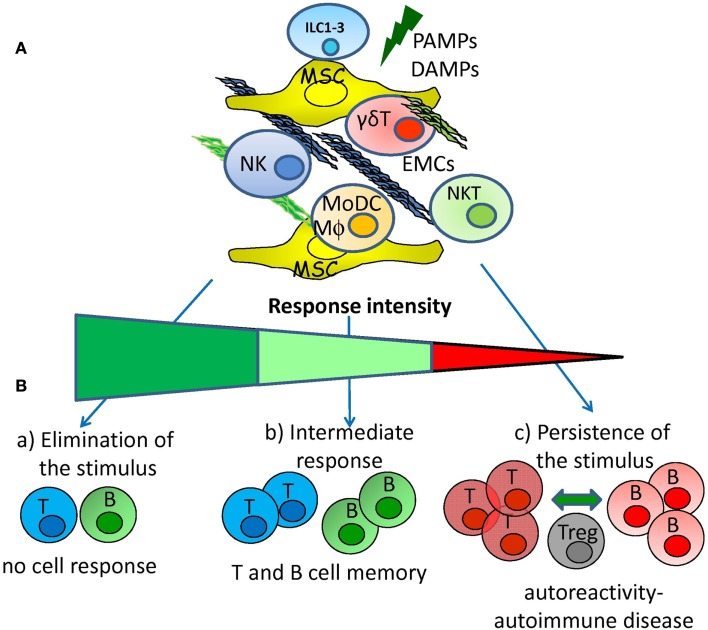Figure 3.
Hypothesis for the generation of adaptive autoreactivity and autoimmunity. (A) Pathogen associated molecular patterns and/or damage associated molecular patterns (PAMPs and DAMPs) can activate innate immunity interacting with receptors expressed on innate lymphoid cells (NK, ILC subsets, NKT, and γδT lymphocytes). The activation of innate immunity can be regulated by reciprocal interactions among mesenchymal stromal cells (MSC), extracellular-matrix components (EMCs), lymphoid cells, monocyte-derived macrophages (MΦ), and dendritic cells (MoDCs). (B) Innate response elicited by NK, ILC subsets, NKT, and γδT lymphocytes interacting with MSC and EMCs can lead to: (a) rapid elimination of the danger signal that avoids the triggering of adaptive immune cell response; (b) intermediate innate response that leads to the triggering of adaptive immunity with the generation of memory T and B cells; (c) low innate response that determines the persistence of the danger signal leading to generation of autoreactive T and B cells. Autoreactive T and B lymphocytes are controlled by regulatory cells (Treg) but chronic stimulation tends to break the tolerance leading to autoimmune disease.

